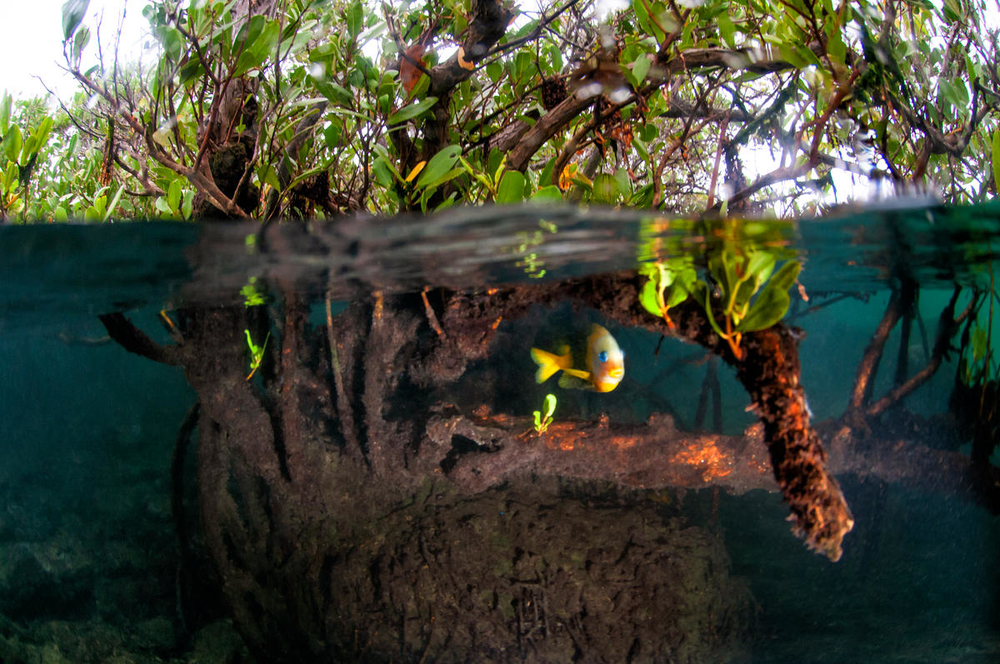The financial services sector is slowly getting its act together focussing on biodiversity-related risks and investing in nature-based solutions, but policymakers and regulators need to follow suit, says Margaret Kuhlow, Global Finance Practice Lead of the World Wide Fund for Nature (WWF).

CV
- Global Finance Practice Lead at the World Wide Fund for Nature (WWF), 2016-present
- Vice President of Investment Policy at the Overseas Private Investment Corporation (OPIC), 2012-2016
- Managing Director Economic Analysis and Development Impact, OPIC, 2011-2012
- Team member U.S. Government’s Millennium Challenge Corporation, 2007-2011
- Various roles working on global macroeconomics and development issues, U.S. Department of the Treasury, 1998-2007
As self-evident as that statement may seem, there is still a long way to go to change investor behaviour and get the right policy and regulatory frameworks in place to mitigate the damage done to our planet.
WWF engages with regulators and with the Network for Greening the Financial System, a group of 83 central banks and financial supervisors.
“This is what will get moving next but we need higher ambition, policymakers need to more actively encourage nature-based solutions. We need more of them and faster.”
At the moment, we are still heading for an increase of +3 degrees Celsius instead of the maximum +1.5 degrees to avoid the worst impacts of climate change, according to Kuhlow.
She is concerned about environmental tipping points and is worried that we may have missed our chance for a smooth transition to decarbonise our economy.
“We are good at closing the barn door after the horse has bolted. Covid proved this too; we knew it was coming though not exactly where or when, but we still did not prepare. We are terrible at prevention,” she says.

Challenges in investing in nature-based solutions
Investing in nature-based solutions is not always straightforward as it is not as simple as closing down polluting industries, given that they are often the main employer of a region.
“You cannot have a conversation about the 1.5-degrees Celsius target without having a conversation about a just transition and how to support communities and industries that need to make a significant transition,” Kuhlow says.
“Too often these are treated as separate topics, but more could be achieved if they were discussed at the same time. If you think about this type of investment in the context of recovery from Covid 19, you can build up your natural resources for climate mitigation, but also for resilience as well as job creation, since a lot of these solutions are job intensive. For example, eco-agriculture is much more job intensive than monoculture.”
Biodiversity loss as a portfolio risk
In 2019 in Davos, WWF and Sir David Attenborough wanted to highlight the significant loss of biodiversity since 1970. At the time though, the majority of the finance industry was not quite ready to consider this at the portfolio level, as they had just got round to considering climate risks.
“Fast forward to 2021, and it is a completely different conversation. It is partly because of the conversations that happened through the climate change discussions, Kuhlow says.
“Once we explained the relationship between climate change and biodiversity loss, the penny dropped that the loss of biodiversity also means the loss of one of the major tools in the fight against climate change and undermines the ability to mitigate the physical impact of climate change,” she says.
“Also, the fires and droughts in California, Australia and elsewhere prompted discussions about how many major cities globally were extremely exposed to climate risks. I would have never imagined that we would have got this far in two years. It is a combination of making the right connections and building coalitions.”
Closing the gap between advocacy and the finance sector
Having engaged with the finance sector for well over a decade, WWF launched its Finance Practice just over four years ago. Since then, it has increased its efforts to make the finance sector realise that protecting nature is necessary for stability.
The finance sector needs to engage with the major emitters, and with policymakers around policy change such as real carbon pricing.
Kuhlow says the way WWF approaches the financial sector is by thinking about where the levers are. “We want to change the real economy and finance is a lever for change. The objective is not to have a financial organisation with a 100% clean portfolio if there is no real change in emissions. It might be a PR victory, but you have to work on all parts of the elephant. The finance sector needs to engage with the major emitters, and with policymakers around policy change such as real carbon pricing,” she says.
WWF sees asset owners such as pension funds as the top of the apex, with enough clout to move the needle towards sustainability. A different asset allocation forces asset managers to find sustainable investment opportunities.
“Another important issue with pension funds is their long-term time horizon, which really changes how they engage with climate and environmental issues. Pension funds have a lot of clout and a lot of say in how and where they invest. They have members entering the workforce now who will not retire until after 2050. In a world that is +3 degrees Celsius warmer, there are no investable assets.”
Reduce harmful subsidies
Kuhlow says all parties need to be part of the conversation, which is why conferences such as the COP26, the 26th UN Climate Change Conference of the Parties are important.
While the increase of the flow of funds to climate adaptation and mitigation targets is important, equally important is to reduce harmful subsidies to areas such as fossil fuels, which are significant at 5-6% of GDP as estimated by the IMF.
She also notes that the impact investment community needs to look at environmental outcomes and not only focus on social ones, as they are often closely linked.
However, Kuhlow is also excited about the leadership she has seen in the financial industry, where executives make difficult business decisions. Quoting former Chief Investment Officer of Japan’s Government Pension Investment Fund Hiro Mizuno, Kuhlow says the role of finance is to be ‘an accelerator for change-makers’.
“In 10 years, what I want to see from the finance sector is that it provides financial resources to the people who are part of the solution, and not people who are part of the problem.”



